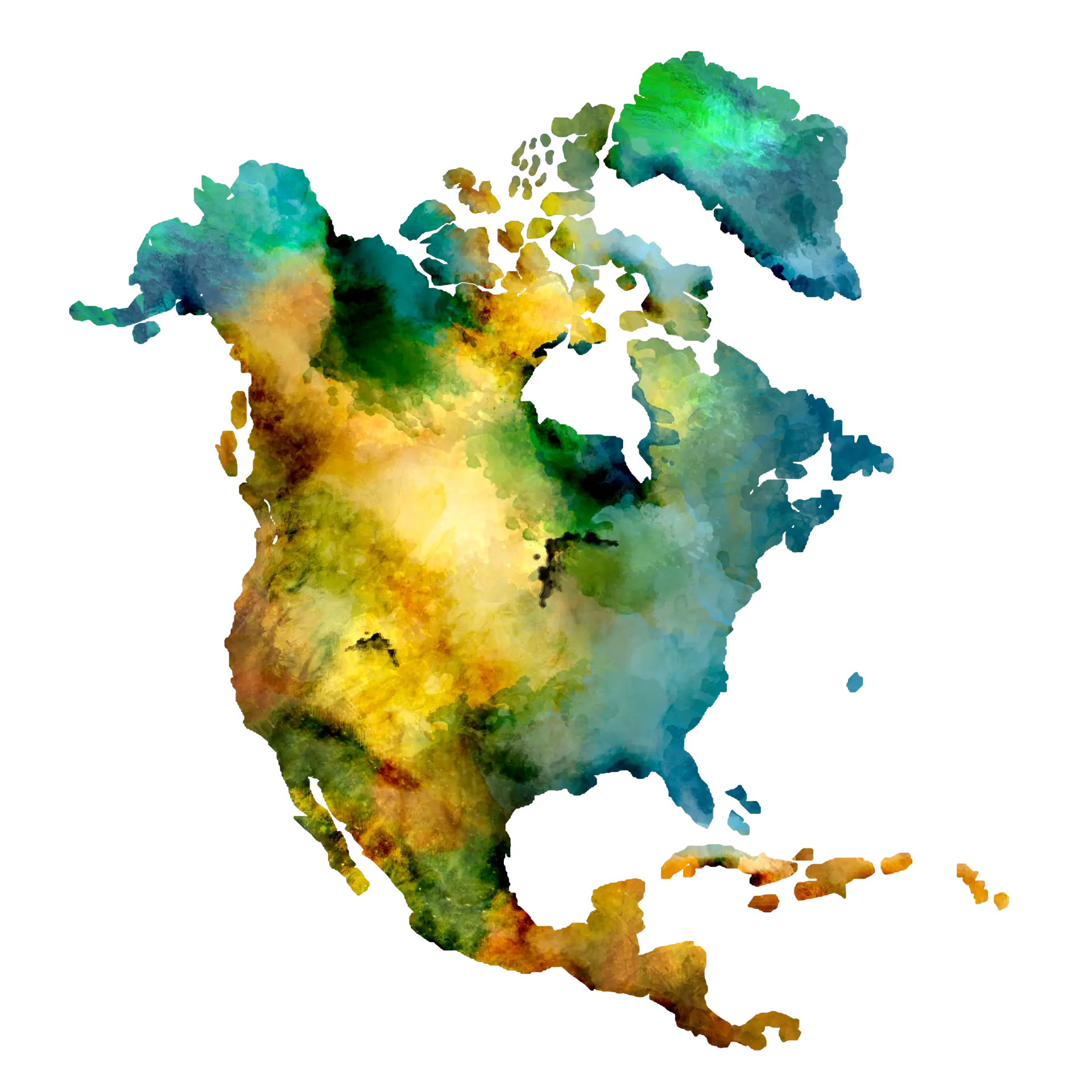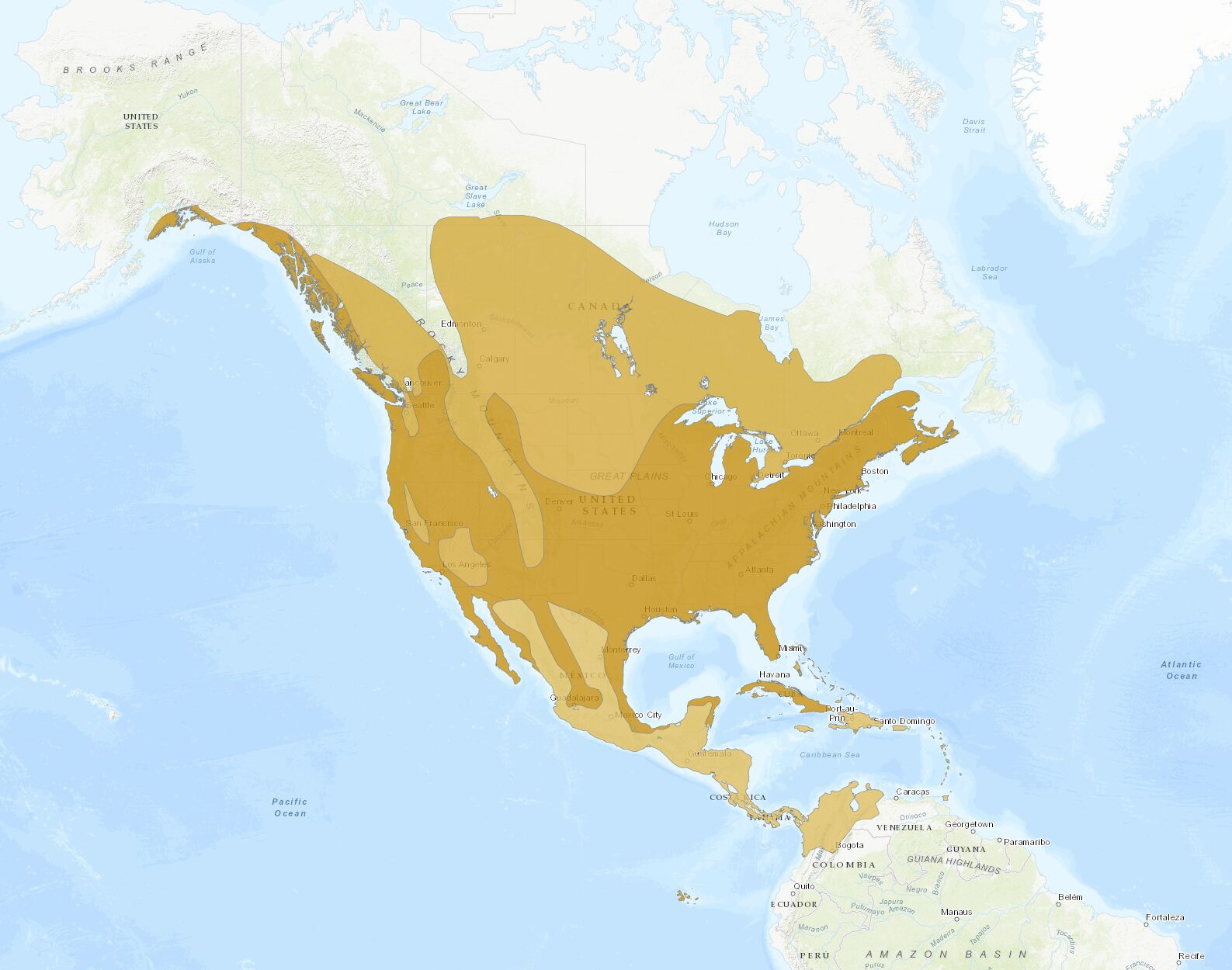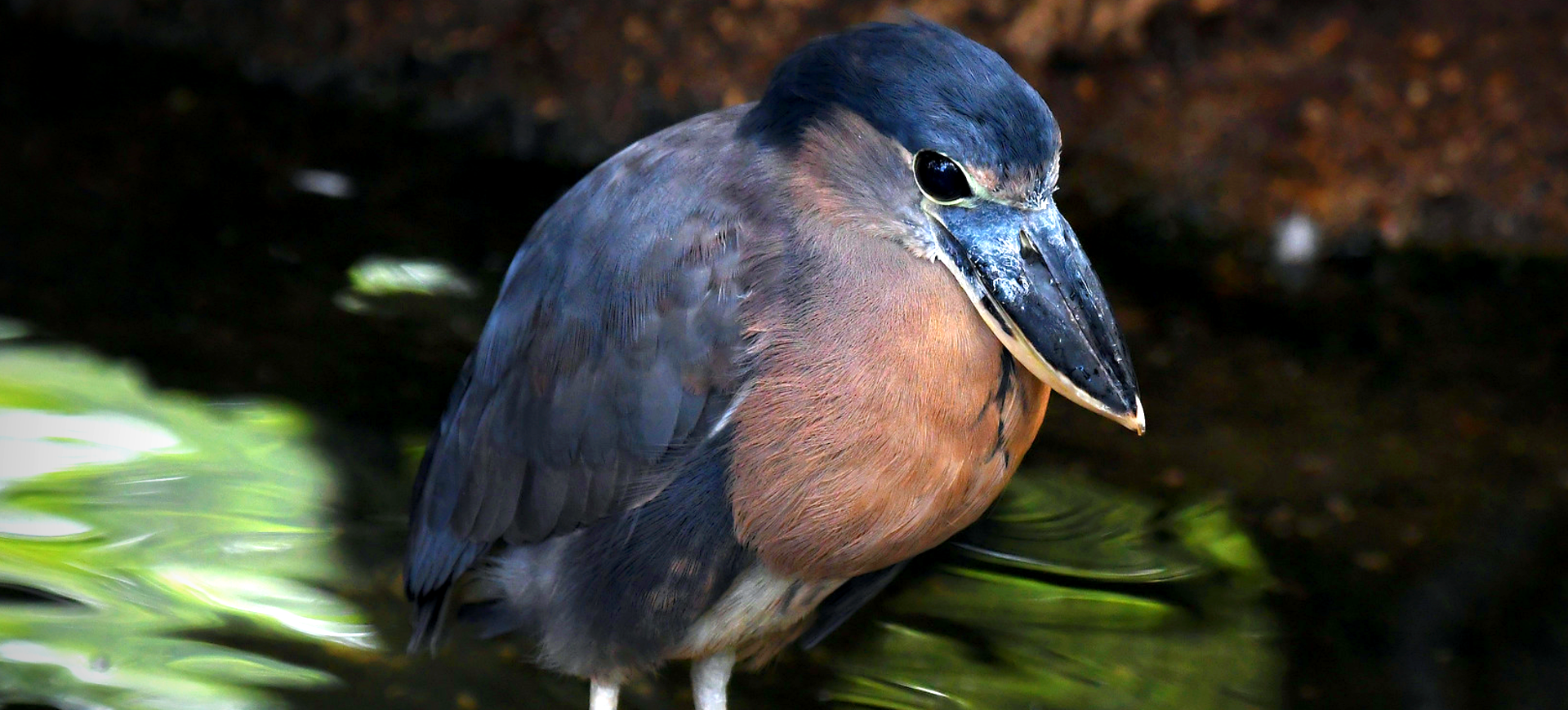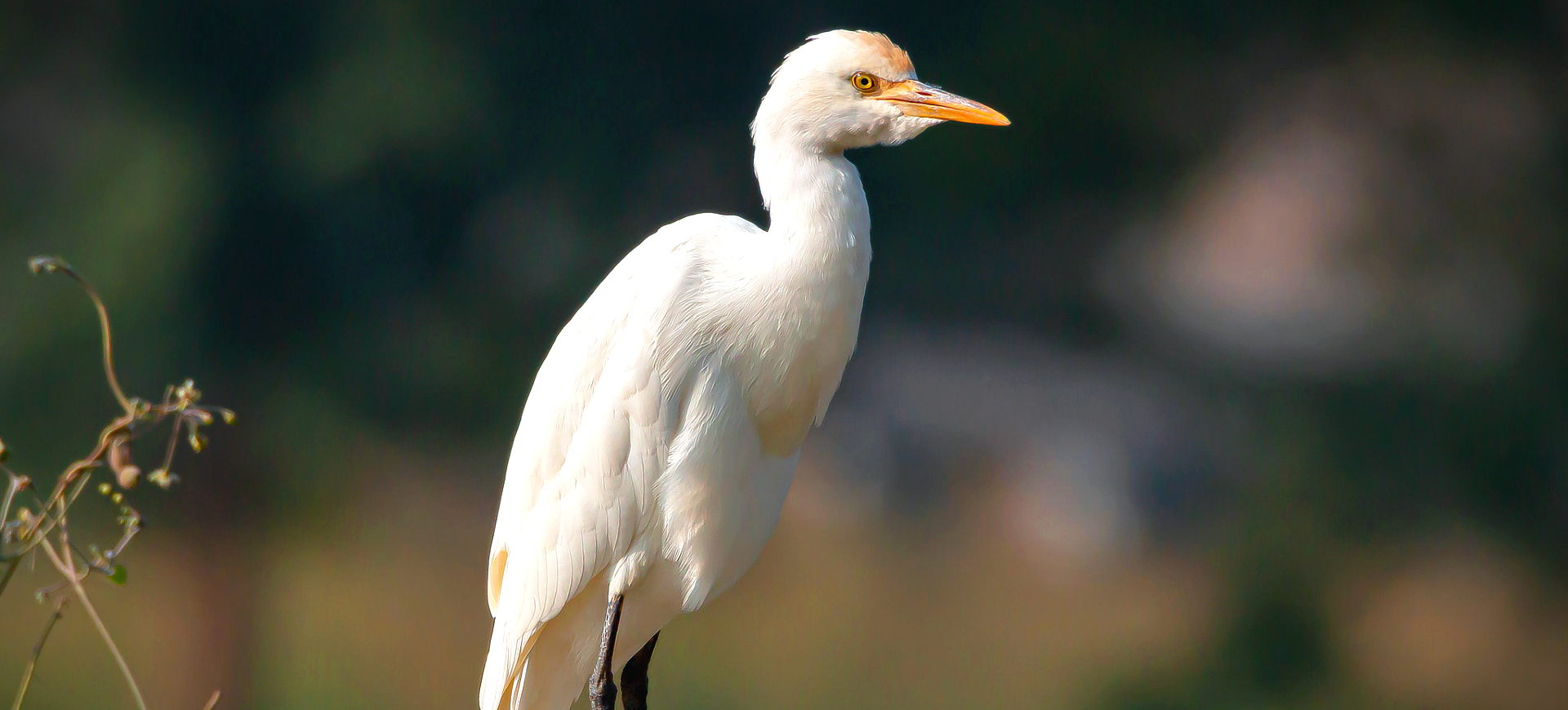Overview
The Great Blue Heron (Ardea herodias) is a large wading bird commonly found in wetlands and coastal areas across North and Central America. It is one of North America’s most prevalent and adaptable herons, recognized by its striking blue-gray plumage and long, curved neck. Great Blue Herons are known for their solitary feeding habits, often seen standing still as statues while they keenly watch for fish and amphibians. They employ swift and deadly precision to spear their prey with sharp, pointed beaks.
These herons breed in colonies, known as heronries, which can vary from a few to several hundred nests. Each nest is predominantly constructed of sticks and high in trees to avoid predators. During the breeding season, adults display rich plumage with long plumes on their heads, necks, and backs, and they can be heard making loud, croaking calls. The social structure during this time is complex, involving elaborate courtship rituals to attract mates and assert territory.
Conservation-wise, the Great Blue Heron is not currently considered at risk, thanks to its wide distribution and large population. However, it is affected by pollution and habitat destruction, particularly in wetlands. Reserving its natural habitats is crucial for maintaining the population, as these areas provide vital nesting and feeding grounds. The Great Blue Heron’s adaptability to various aquatic environments has been key to its survival, allowing it to thrive in a wide range of settings, from saltwater marshes to freshwater rivers.
Taxonomy
Kingdom
Phylum
Class
Order
Family
Genus
Species
Sub Species
Type
Current distribution:
The Great Blue Heron is found throughout most of North America, from Alaska and Canada through the United States to northern South America. It is a year-round resident along the coasts of the Atlantic, Pacific, and Gulf of Mexico. Inland populations in colder regions migrate southward to Central America and the Caribbean for winter, returning in spring for breeding.
Their widespread distribution is a testament to their adaptability. They thrive in a variety of climatic and geographical regions. This flexibility in habitat preference has enabled the Great Blue Heron to maintain robust population levels across a broad geographic area.
Physical Description:
Great Blue Herons are among the largest herons, and due to their size and striking appearance, they command a commanding presence. They typically measure about 36 to 54 inches in length and possess a wingspan that ranges from 66 to 79 inches. Their body is slender and upright, with a long neck that folds into an “S” shape during flight. The head is white with a striking black stripe above the eye, and they have long, yellowish or grayish legs.
The plumage of the Great Blue Heron varies from blue-gray on the body to a nearly black plume of feathers that extend from behind the eye to beyond the back of the head. Juveniles display a more subdued coloration, being more sooty gray with less defined patterning. Their ability to blend into the marshy landscape is an evolutionary advantage, providing camouflage as they stalk their prey. In flight, they present a powerful and graceful silhouette, with slow wing beats and neck tucked back, legs trailing straight.

Lifespan: Wild: ~15 Years || Captivity: ~20 Years

Weight: Male: 5.3-7.1 lbs (2.4-3.2 kg) || Female: 4.6-5.8 lbs (2.1-2.6 kg)

Length: Male & Female: 36-54 in (91-137 cm)

Height: Male & Female: 38-54 in (97-137 cm)

Wingspan: Male & Female: 66-79 in (168-201 cm)

Top Speed: 30 mph (48 km/h)
Characteristic:
Native Habitat:
Great Blue Herons inhabit many wetland habitats across North America, from subarctic tundra to tropical mangroves. They are typically found in freshwater and saltwater environments, including ponds, lake edges, marshes, swamps, and coastal tidal flats. Adapting to diverse aquatic environments has allowed them to distribute widely across their range.
Nesting sites are usually located in tall trees or shrubs near water bodies, providing food access and offspring protection. These locations also facilitate the building of large stick nests, which mating pairs reuse and add to each year. The ability to exploit various nesting and feeding habitats has contributed to the species’ widespread success throughout its range.
Climate Zones:
Biomes:
Biogeographical Realms:
Continents:
Countries:
Diet:
Diet & Feeding Habits:
Great Blue Herons are opportunistic predators, primarily feeding on a diet of fish, which they catch by wading slowly or standing still in shallow water before striking quickly with their sharp beaks. They also consume other aquatic organisms, including shrimp, crabs, insects, small mammals, and amphibians. This varied diet allows them to adapt to different water bodies and ensures food availability across seasons.
Feeding territories are typically solitary, although herons will gather in plentiful feeding areas where competition is minimal. The hunting technique of the Great Blue Heron involves stealth and patience, standing motionless or wading very slowly to avoid startling prey. They are mostly diurnal feeders but can also hunt at night, using their sharp eyesight to locate prey.
Mating Behavior:
Mating Description:
Great Blue Herons are seasonal breeders, with mating activities beginning in the spring. They are colonial nesters, often forming large rookeries that can include hundreds of other herons and different species. Mating pairs are monogamous during a breeding season but may change partners in subsequent seasons. The courtship involves a variety of displays, including bill clapping, plumage bristling, and in-flight displays to attract mates.
The female lays 3 to 6 pale blue eggs, and both parents share incubation duties over about 28 days. The chicks are altricial at birth, meaning they are featherless and blind, completely dependent on their parents for food and protection. Parental care is intensive in the early stages, with both herons feeding the chicks regurgitated food. As the young grow, they explore the nesting area and gradually learn to hunt for themselves.
Reproduction Season:
Birth Type:
Pregnancy Duration:
Female Name:
Male Name:
Baby Name:
Social Structure Description:
Great Blue Herons are largely solitary outside of the breeding season, with individuals spreading out across wide areas to feed. During breeding, however, they gather in colonies that can be remarkably social, featuring a dense congregation of nests. These colonies can reduce predation risk and provide a collective vigilance that warns of potential threats.
The interactions within these colonies are complex, involving cooperative behaviors, such as communal nesting, and competitive behaviors, such as territorial disputes over nesting sites. The balance between competition and cooperation plays a crucial role in the social dynamics of the breeding colony.
Groups:
Conservation Status:
Population Trend:
The population of Great Blue Herons is considered stable and widespread, reflecting their success in various aquatic habitats. They are abundant in areas with abundant wetlands and coastlines, where food supplies and nesting sites are readily available. Environmental changes and human activities that impact wetlands and aquatic systems are the most significant threats to their populations.
Despite potential threats, their broad ecological niche and generalist diet have helped them maintain stable numbers. Conservation efforts that protect wetlands and their aquatic feeding grounds are critical to ensuring the continued health of Great Blue Heron populations across their range.
Population Threats:
The main threats to Great Blue Herons are habitat destruction and pollution, particularly in wetlands and aquatic environments critical for feeding and breeding. The development and drainage of wetlands reduce the number of available nesting and feeding areas, impacting local populations. Pollution, particularly heavy metals and pesticides, can contaminate their aquatic prey, leading to health problems and reduced reproductive success.
Climate change also poses a long-term threat, potentially altering the water levels and fish populations in their habitats. Human disturbances, including recreational activities near nesting sites, can also lead to nest abandonment and decreased reproductive success.
Conservation Efforts:
Conservation efforts for Great Blue Herons largely focus on protecting and restoring their wetland habitats. Legal protections under the Migratory Bird Treaty Act in the United States and similar regulations in other countries help safeguard these birds from hunting and exploitation. Conservation organizations and government agencies work to manage wetlands in a way that supports the ecological needs of herons and other wildlife.
Education and awareness programs help reduce human disturbances at nesting sites during the critical breeding season. Efforts to monitor populations and study the impacts of environmental changes are also crucial in developing effective conservation strategies. These measures help maintain healthy Great Blue Herons populations, ensuring their role in the ecosystem remains robust.
Additional Resources:
Fun Facts
- Thanks to specialized neck vertebrae, Great Blue Herons can strike their prey at a remarkable speed.
- They have a special modification in their vertebrae called the “powder down,” which helps clean oil from their feathers.
- Great Blue Herons can digest nearly everything from their prey except fur and feathers, which they regurgitate as pellets.
- They have been observed using tools like bread or insects as bait to catch fish.
- Great Blue Herons weigh less than a newborn human baby despite their large size.
- Their call is a harsh croak that is surprising for such a majestic bird.
- They are highly adaptable and can be found in habitats from tropical mangroves to frozen shorelines.
- Great Blue Herons can sleep standing up, thanks to a special mechanism in their legs that locks the tendons.
- They are among the few bird species that practice “bill dueling,” a behavior during mate selection.
- The oldest known Great Blue Heron was estimated to be 24 years old.
















